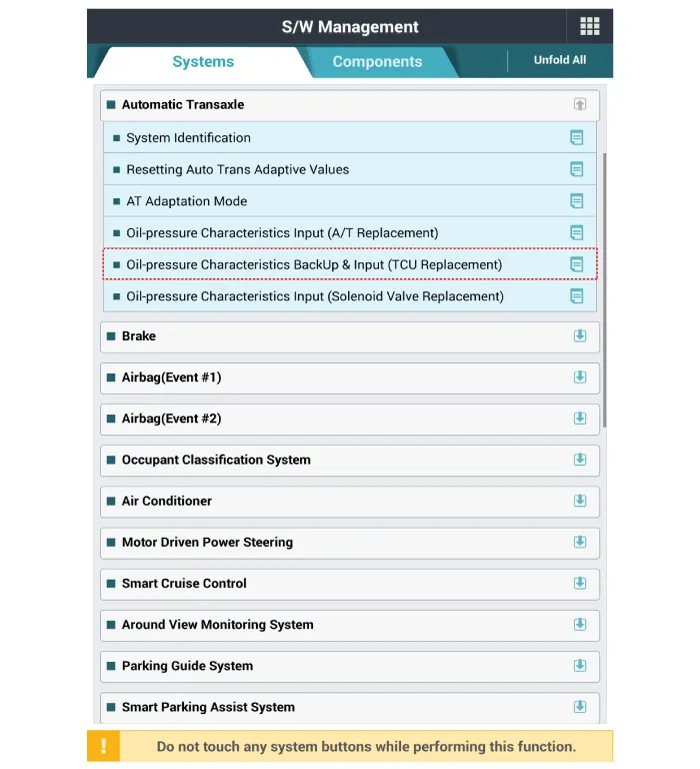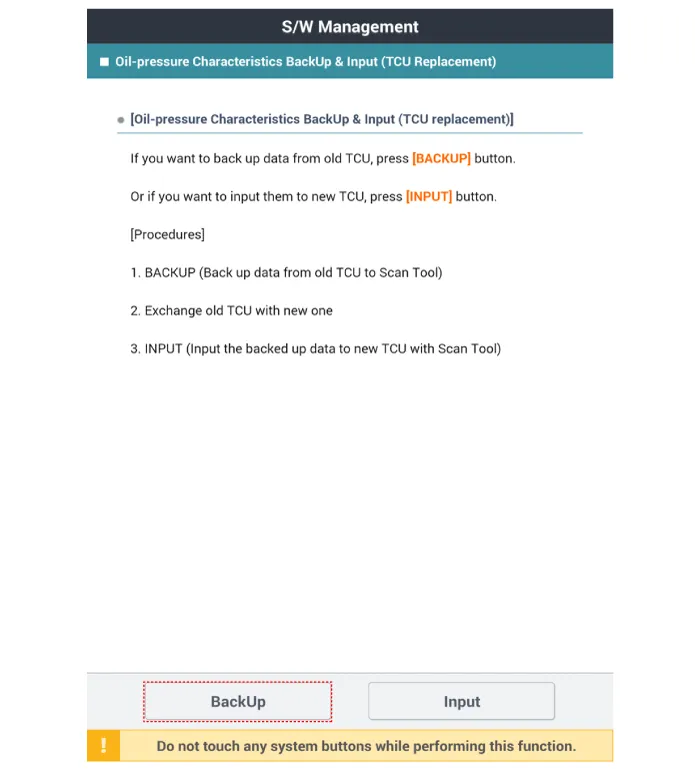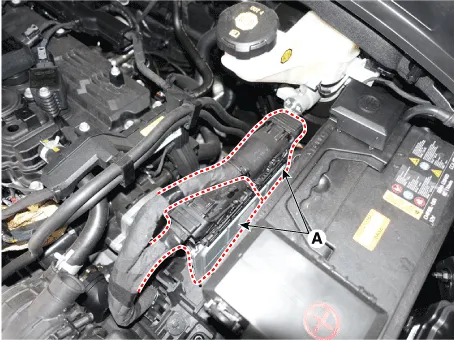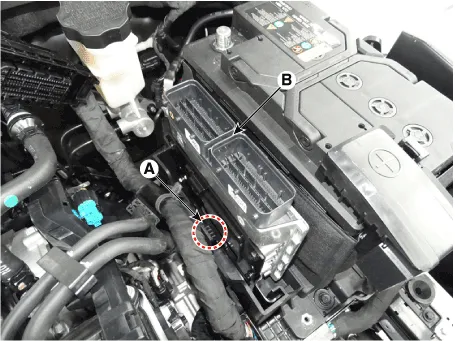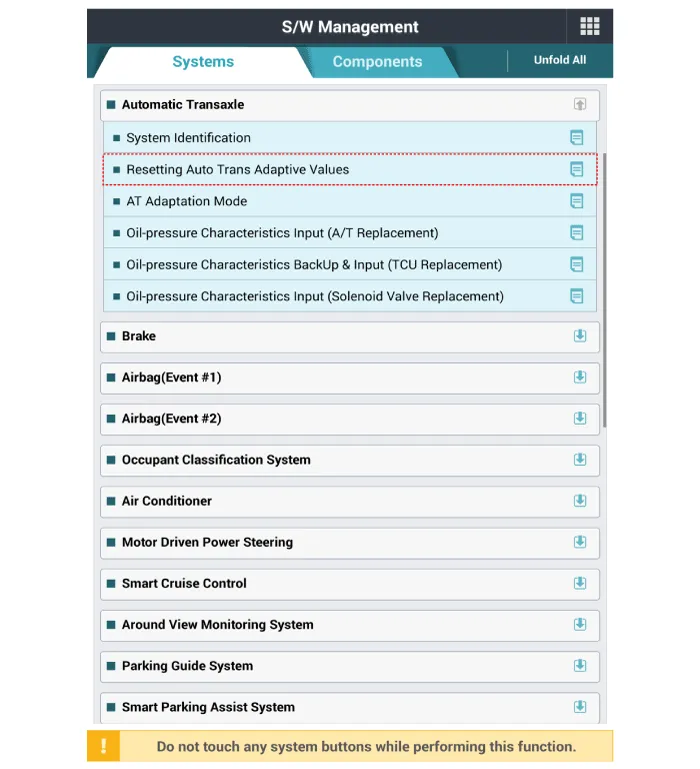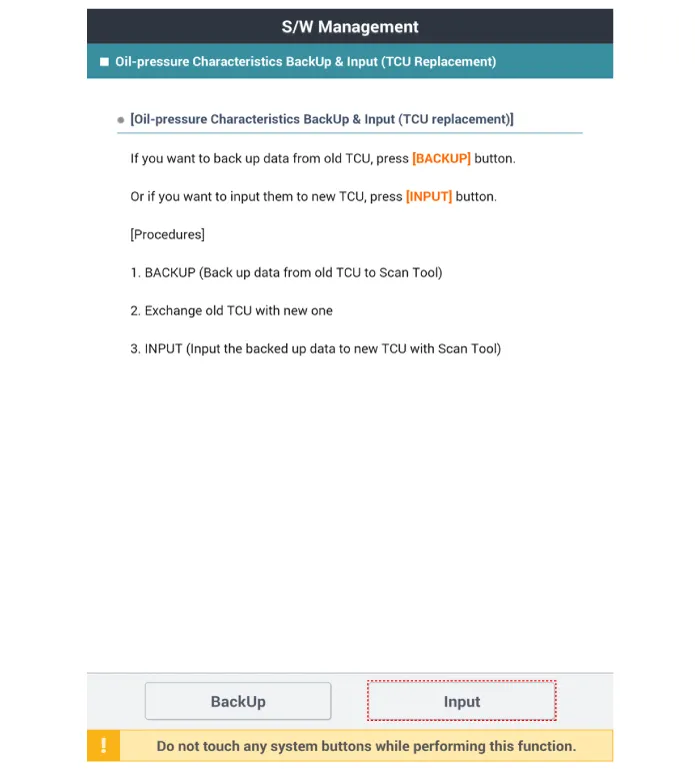Hyundai Santa Fe (TM): Automatic Transaxle Control System / Transaxle Control Module (TCM). Repair procedures
| Inspection |
| 1. |
TCM ground circuit test : Measure the resistance between TCM and chassis
ground.
(Inspect the terminal connected to the chassis ground with the back
of harness connector as the inspection point of TCM side.)
|
| 2. |
TCM connector test : Disconnect the TCM connector and visually check
the ground terminals on TCM side and harness side for bent pins or poor
contact pressure.
|
| 3. |
If problem is not found in Steps 1 and 2, the TCM could be faulty.
If so, replace the TCM with a new one, and then check the vehicle again.
If the vehicle operates normally then the problem was likely with the
TCM.
|
| 4. |
Reinspection of original TCM : Install the original TCM (probably broken)
into a known-good vehicle and check the vehicle. If the problem occurs
again, replace the original TCM with a new one.
If the problem does not reoccur, this is an intermittent problem and
other part may be faulty.
|
| Removal |
| 1. |
Perform the oil pressure characteristics backup procedure using the
diagnostic tool when replacing with a new TCM.
|
| 2. |
Turn ignition switch OFF and disconnect the negative (-) battery cable.
|
| 3. |
Remove the air cleaner assembly.
(Refer to Engine Mechanical System - "Air Cleaner")
|
| 4. |
Remove the TCM.
|
| Installation |
| 1. |
To install, reverse the removal procedure.
|
| 2. |
Oil-pressure characteristics input (TCM exchange)
|
TCM Connector and Terminal Function TCM Terminal Function Connector [A] Pin No Description Connected to 1 Power ground Chassis Ground 2 - - 3 - - 4 - - 5 - - 6 Fuel Sender Signal Fuel Sender 7 - - 8 - - 9 - - 10 - - 11 - - 12 - - 13 - - 14 - - 15 Stop Lamp Signal Stop Lamp 16 Brake Test Switch Brake Switch 17 18 - 19 - 20 Output Speed (Supply) ATM Solenoid Valve (Otput Speed) 21 Input Speed (Supply) ATM Solenoid Valve (Input Speed) 22 - - 23 - - 24 - - 25 - - 26 - - 27 [A/T] SOL.
Description • Transaxle oil temperature sensor monitors the automatic transaxle fluid's temperature and conveys the readings to TCM.
Other information:
Hyundai Santa Fe (TM) 2019-2023 Service and Repair Manual: Power Windows
Description and operation Function Of Safety Power Window When driver door power window auto-up switch is operated, safety function is activated. 1. Safety function condition When detect the force of 100N (using the 10N/mm spring) during the window rising, window is reversed.
Hyundai Santa Fe (TM) 2019-2023 Service and Repair Manual: Special service tools
Categories
- Manuals Home
- Hyundai Santa Fe Owners Manual
- Hyundai Santa Fe Service Manual
- Driver assistance system
- Engine Mechanical System
- Engine Control/Fuel System
- New on site
- Most important about car

